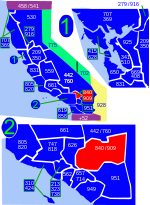Victoria Gardens Cultural Center

The Victoria Gardens Cultural Center (VGCC) is a community library and performance venue attached to the Victoria Gardens lifestyle center in Rancho Cucamonga, California. The building (which links the Lewis Family Playhouse, the Paul A. Biane Library, and the 4,500-square-foot (420 m2) Celebration Hall under one roof) officially opened on August 19, 2006. It is supported in part by The Rancho Cucamonga Library Foundation and the Rancho Cucamonga Community Foundation. These two organizations joined together in 2002 to create the Promoting Arts and Literacy (PAL) fundraising campaign. Since then these two groups have continued to hold their annual fundraising events: the Rancho Cucamonga Public Library Telethon and the Community Foundation Gala for the sole benefit of the PAL campaign. The $33.8 million project was completed without the use of any City of Rancho Cucamonga's General Fund. It was instead financed through a $7.8 million State Library Grant, $5.7 million partnership with Victoria Gardens regional town center developer Forest City Enterprises, private partnerships, Community Development Block Grant funds, and Redevelopment Agency Tax Allocation Bond Funds.
Excerpt from the Wikipedia article Victoria Gardens Cultural Center (License: CC BY-SA 3.0, Authors, Images).Victoria Gardens Cultural Center
Lisbon Place, Rancho Cucamonga
Geographical coordinates (GPS) Address Website Nearby Places Show on map
Geographical coordinates (GPS)
| Latitude | Longitude |
|---|---|
| N 34.112847222222 ° | E -117.53267222222 ° |
Address
Victoria Gardens
Lisbon Place
91739 Rancho Cucamonga
California, United States
Open on Google Maps




